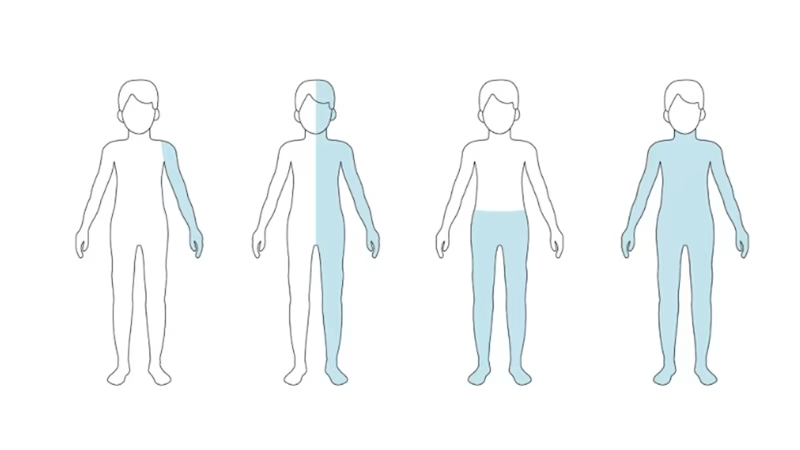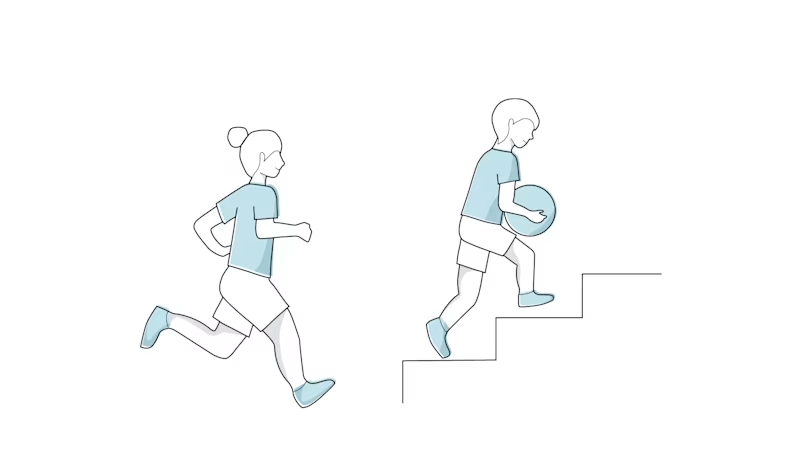

Cerebral palsy: what to expect
Living with cerebral palsy
Mastering cerebral palsy
Cerebral palsy (CP) is an early-childhood brain injury that occurs around birth. Depending on the location of the injury, your child's ability to move may be affected. CP is the most common cause of movement disorders in children. Cerebral palsy mainly affects mobility. For instance, when walking is difficult, this can affect the daily life of your whole family. It is therefore important to support motor development as early as possible with appropriate mobility aids to find good solutions and master everyday life together. Find out here how cerebral palsy can affect children and how you can support your child's movement in a targeted manner.
Getting the diagnosis was a shock. But we quickly decided to make the best of it. We want Justus to get the best support and lead a happy life.
Nicola, Justus’ mother

How to manage cerebral palsy as a family
To many parents, the diagnosis of cerebral palsy in their child is initially a shock. Worries and questions about their future then often dominate thoughts: What effects will cerebral palsy have on the physical and mental development of my child? What can we do for our child to live an active and independent life? How will our family life change as a result?
After the initial diagnosis, it will become clear that there are many ways to support the development of your child with cerebral palsy. To support the development of your child in the best possible way, you as the family will usually receive expert support. Specialists from various fields work together to create a therapy plan to treat both existing and possibly developing restrictions of movement. To achieve this, therapies such as movement therapies or neuromobility aids are available.
What are the causes of cerebral palsy?
Finding out the exact cause behind cerebral palsy in an individual child or determining the risk factors that may have played a role is often challenging for doctors. It is often not possible to determine the cause of the early brain injury. Doctors also discuss whether several factors may be involved in the development of cerebral palsy.
The known causes of cerebral palsy in children are very diverse. Doctors usually classify the causes according to the time at which children acquire the brain injury:
More than 50 percent are affected before birth (prenatal) or during pregnancy as a result of infection or lack of oxygen, for example when a blood clot (thrombosis) forms in a blood vessel in the brain and obstructs blood flow.
During birth (perinatal): From lack of oxygen at birth, for example.
Less commonly after birth (postnatal) as a result of infection such as meningitis or kernicterus, or overlooked rhesus incompatibility.

Increasingly, doctors are finding genetic causes of cerebral palsy and speak of "de-novo" mutations. These are chromosomal disorders that can be inherited, which is why siblings often have an increased risk of CP. In addition, there are a number of other factors that may increase the risk of cerebral palsy in children. Some of these factors are:
Multiple pregnancies
Maternal obesity during pregnancy
Infectious diseases such as toxoplasmosis or rubella, or those caused by cytomegalovirus or herpes simplex virus before or after birth
Further causes of cerebral palsy are:
Premature birth: Children born before 28 weeks are more likely to be affected by cerebral palsy.
Birth complications
A birth weight that is too high or too low

Find products that can support your child's mobility
How does cerebral palsy affect my child’s development?
Depending on the severity of the resulting brain injury in early childhood, different symptoms of cerebral palsy may appear. In children, cerebral palsy mostly affects motor skills or mobility and leads to various movement disorders. In addition, there are other accompanying symptoms such as pain or cognitive impairments; some children may struggle to talk or smile. The symptoms of each child depend on the particular area of the brain affected, so not every child will experience the same symptoms and to the same severity.
The following signs of cerebral palsy occur alone or in combination.
Based on the individual symptoms, doctors can distinguish between different types or classifications of cerebral palsy. The following overview shows the form of cerebral palsy behind the medical terms:
Each sibling has supported Justus in his progress. He has become more independent and learned new things he would not have experienced on his own.
Nicola, Justus’ mother

Living as a family with cerebral palsy
Improving the mobility of children with cerebral palsy
In the first place, treatment of cerebral palsy depends on the type of symptoms and how these affect daily life. The goal of therapy is to improve your child's motor skills as well as cognitive development. The aim is to ensure your child is in an upright position so that his or her further development can be facilitated. In addition, regular appointments are used to keep track of how mobile your child is and how he or she is developing to provide the best possible support for independence. Preventive measures also play a major role to prevent muscle, ligament or tendon shortening and contractures as well as malpositions in the first place.
Many different professional groups work together to promote the mobility of your child with cerebral palsy. Planning of the necessary therapeutic measures is mainly the responsibility of the treating doctors. For movement therapy, your child is primarily cared for by physiotherapists and occupational therapists. Speech therapists and orthotists are also part of the treatment team to provide support in achieving the best possible physical development and quality of life for your child and your family.
Once Justus was wearing the Exopulse Mollii Suit, his dexterity improved. It became much easier for him to use his fork.
Nicola, Justus‘ mother

What does cerebral palsy mean for your child's future mobility?
Many parents of children with cerebral palsy are uncertain about their child's future. Questions about how the physical impairments will affect development and therefore the prospect of an independent and active life are often the primary focus.
Although cerebral palsy cannot be cured and remains permanent, maintaining and improving mobility are the goals of treatment. Specific support can often improve mobility up to the age of seven. More than half of the children with cerebral palsy are able to walk independently.

Your child’s independence
In addition, the clinical presentation of cerebral palsy varies widely depending on the extent of the injury to your child’s brain. As a result, some children are only very slightly limited, and an independent life on their own is indeed possible. If cerebral palsy is severe, it is possible that those affected will be dependent on support for the rest of their lives; however, even in this case, there are many possibilities and mobility aids to promote and shape your child’s independence and participation.
If no other serious accompanying diseases occur, cerebral palsy does not affect life expectancy.



















